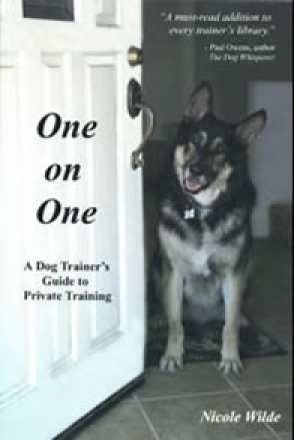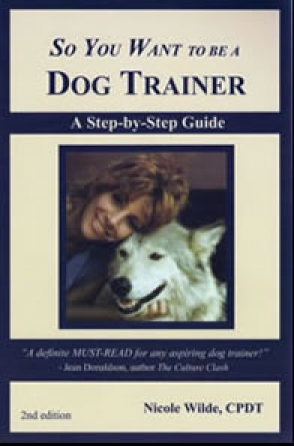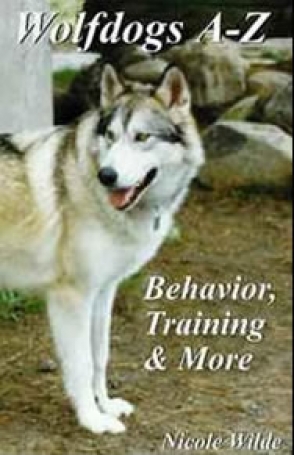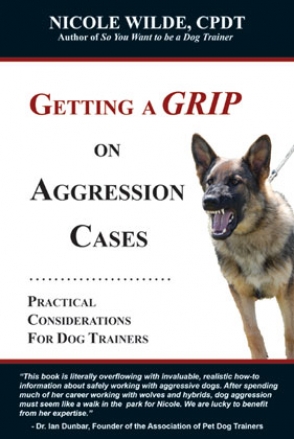Have you always wanted to do private training, but didn't know how to go about it? This guide is like having a friend explain it all. You'll start with exercises to assess your current skills, learn about sales and scheduling, and view sample phone scripts.
Getting a Grip on Aggression
A puppy nips incessantly. An adolescent dog jumps up and practically knocks guests over. A pushy adult grabs food out of a child’s hand. Are these dogs aggressive? No. Obnoxious? Yes. In need of manners training? Absolutely! But they are not aggressive in the true sense of the word.
True aggression carries an intention to cause harm. Unfortunately, although many dog owners notice signs of escalating threatening behavior, nothing is done until there is an actual bite. Sometimes, if the dog is only biting family members, the behavior is tolerated until the dog bites someone outside the family, as that carries the threat of legal action.
By the time an owner makes the decision to call a trainer, that person is often distraught and may even be considering giving the dog up to a shelter or euthanizing it. Sometimes one family member is willing to work on the problem, while another is less tolerant. And the stakes are higher across the board when children are involved. But regardless of the intensity of the behavior and the emotional climate in the home, it is crucial for owners to make a careful choice when hiring a trainer.
Naturally, experience is one factor to inquire about. Someone who has been working with aggressive dogs for twenty years has a lot more experience than someone with just a year or two in this area of specialization. But—and this crucial point is often lost on owners—that does not mean the trainer with twenty years experience is the right one to hire. Experience counts, sure. But so does methodology. There are two main schools of thought in working with aggression issues: The first could be called “Meeting Aggression with Aggression.” These are the trainers who will tell you that you “have to show the dog who’s boss” and that you “can’t let him get away with that behavior.” True, dogs do need strong leadership, but the very tone of those comments is a hint that the trainer is likely to take a strong-arm approach with the dog. Trainers who feel they must “alpha roll” the dog, or use scruff shakes or other physical methods to dominate the dog, simply don’t know any other way to handle the situation. If they did, they wouldn’t be resorting to the “law of the jungle.” Sure, physical force will stop the behavior at the moment, assuming the trainer is strong enough and forceful enough. But it doesn’t solve the underlying problem. The dog probably won’t try the unwanted behavior with that trainer again. But unless the trainer is planning on adopting the dog or moving in with the family, that approach really doesn’t solve the problem. Women and children in particular tend to be recipients of the fallout and displacement behaviors caused by the strong-arm approach. And really, meeting aggression with aggression simply puts a Band aid on the symptoms rather than addressing the underlying issue, which means the dog’s feelings may end up being expressed in other ways--some of which will not be pleasant.
The alternate approach could be called “Solving the Underlying Problem.” If a dog is aggressive toward people, for example, rather than simply jerking the dog’s collar or otherwise punishing him every time he displays aggressive behavior, the trainer would take steps to ensure that the dog is taught, slowly and methodically, that people are nothing to be afraid of. Yes, you read that right—afraid. Over ninety percent of aggression cases are fear-based. Most aggressive dogs are not flat-out vicious, but simply want the object of their distress to disappear. They have learned this can effectively be accomplished through barking, snarling, air snapping, and other displays. These displays tend to escalate as the dog gains confidence. But by teaching the dog that people are nothing to be afraid of, the underlying emotions can change, and the symptoms will naturally disappear.
My new book “Getting a Grip on Aggression Cases” (www.phantompub.com) discusses all the things trainers need to know when working with aggression cases. It’s not so much about the actual techniques as it is everything else: questions to ask before the session even begins, ways to stay safe during sessions, what to do in specific situations such as being bitten at a session, encountering strays while training in public, handling reactive dogs in group classes, and so forth. I would hope that any trainer who is handling aggression cases would take the time to learn those things as well as to gain enough experience in actual handling and sound techniques that the dogs and owners are truly being served. And I hope that owners who are looking for a trainer to work with their aggressive dog will take the time to do their research and choose a trainer carefully, as it literally could be a life or death decision for the dog. Questions should be welcomed, not brushed off, and the answers should paint a picture of a gradual, knowledgeable approach that will address the issue in a positive way.










